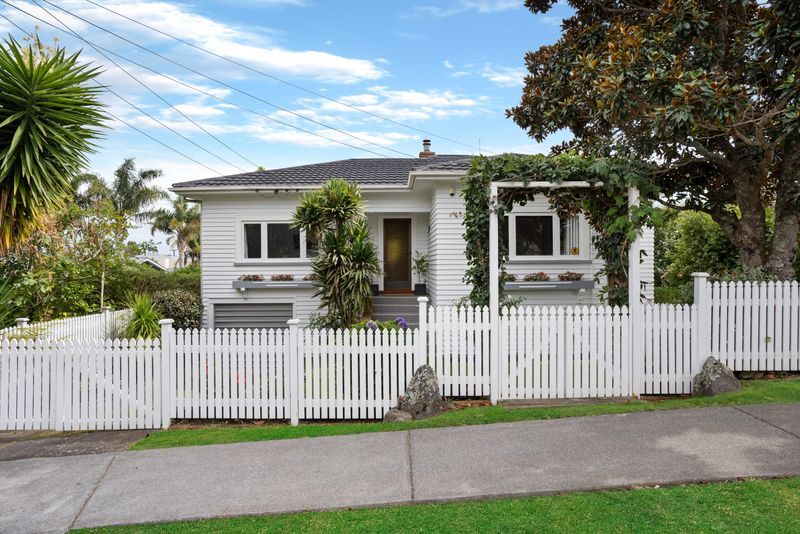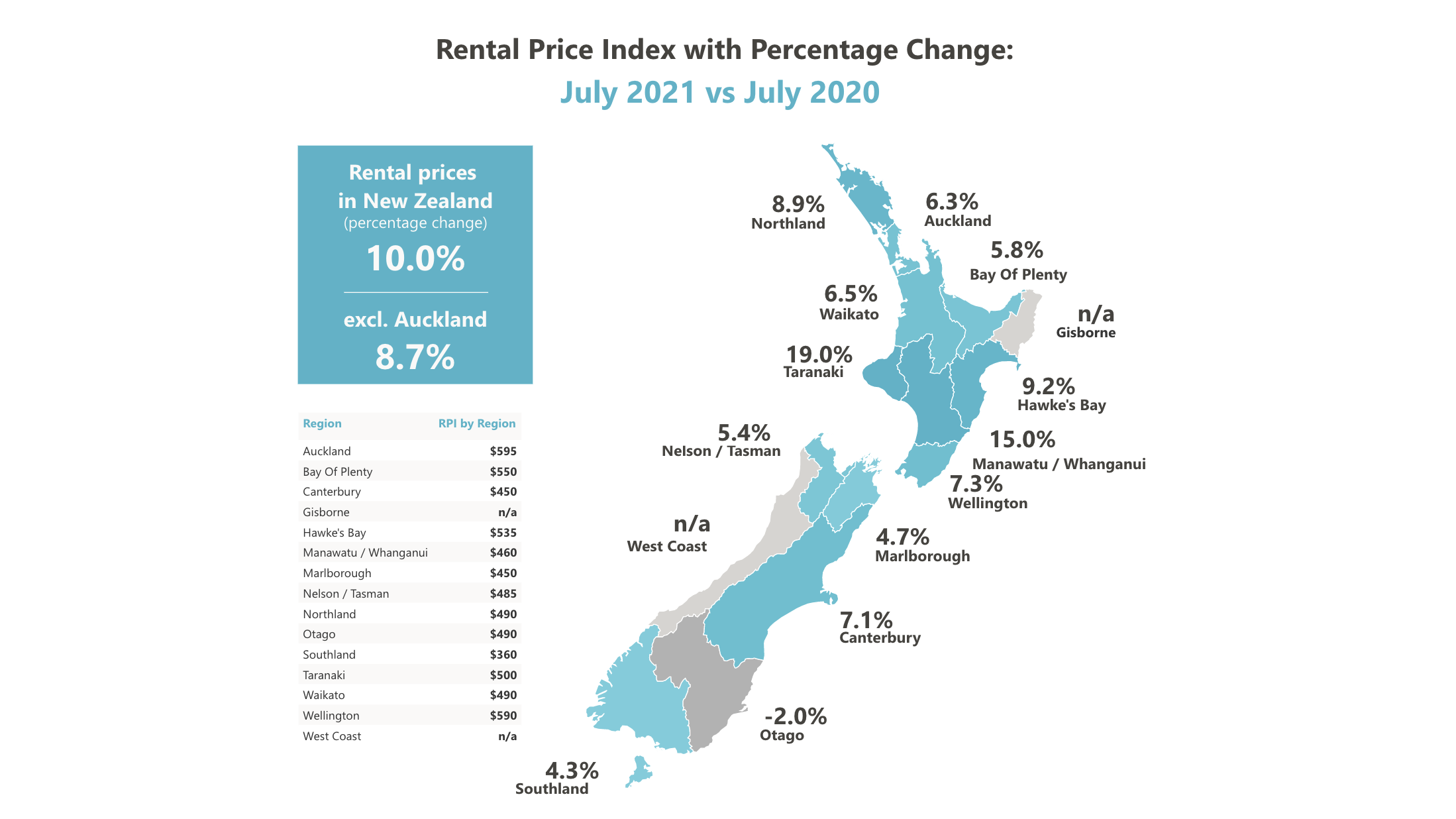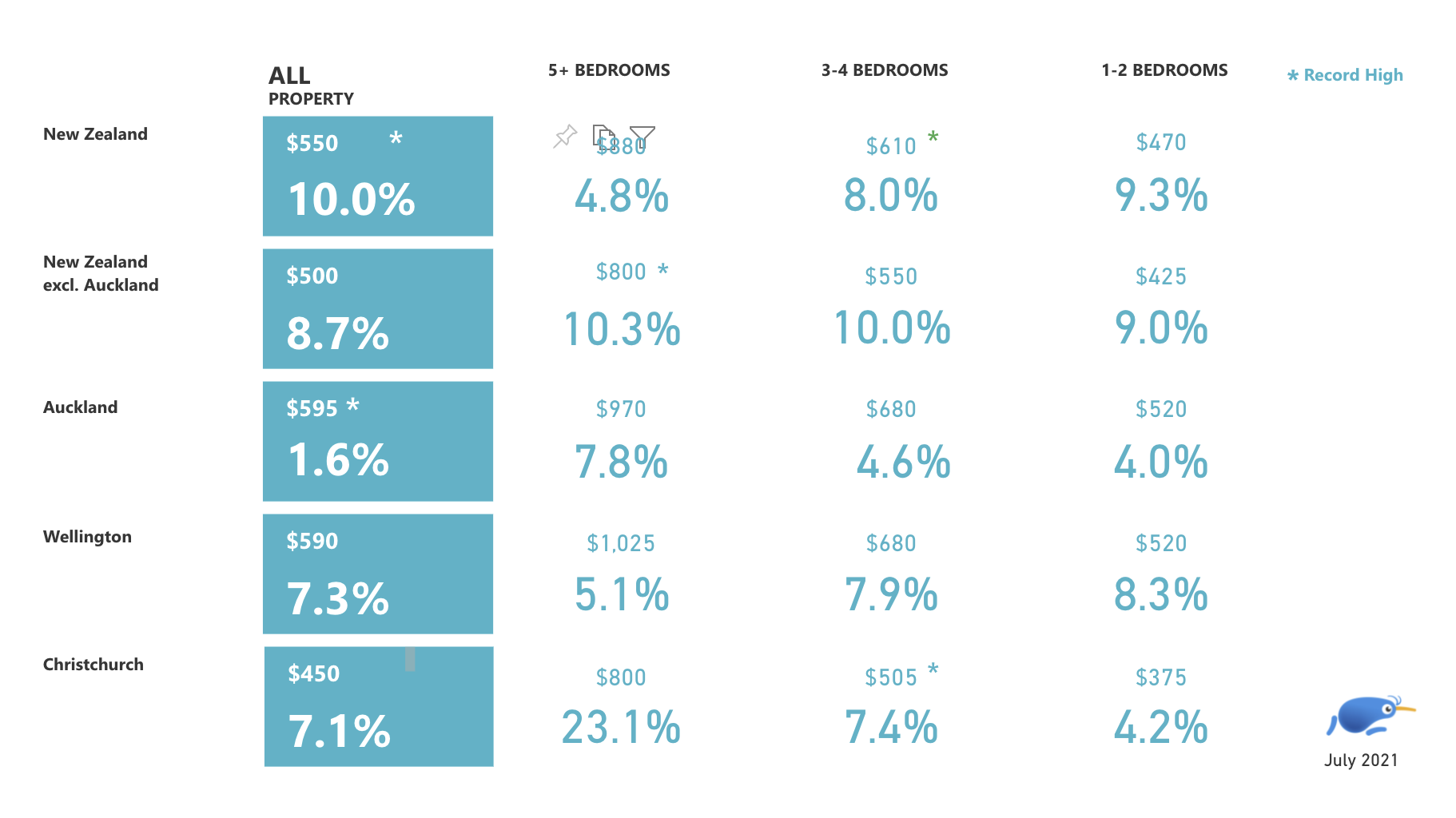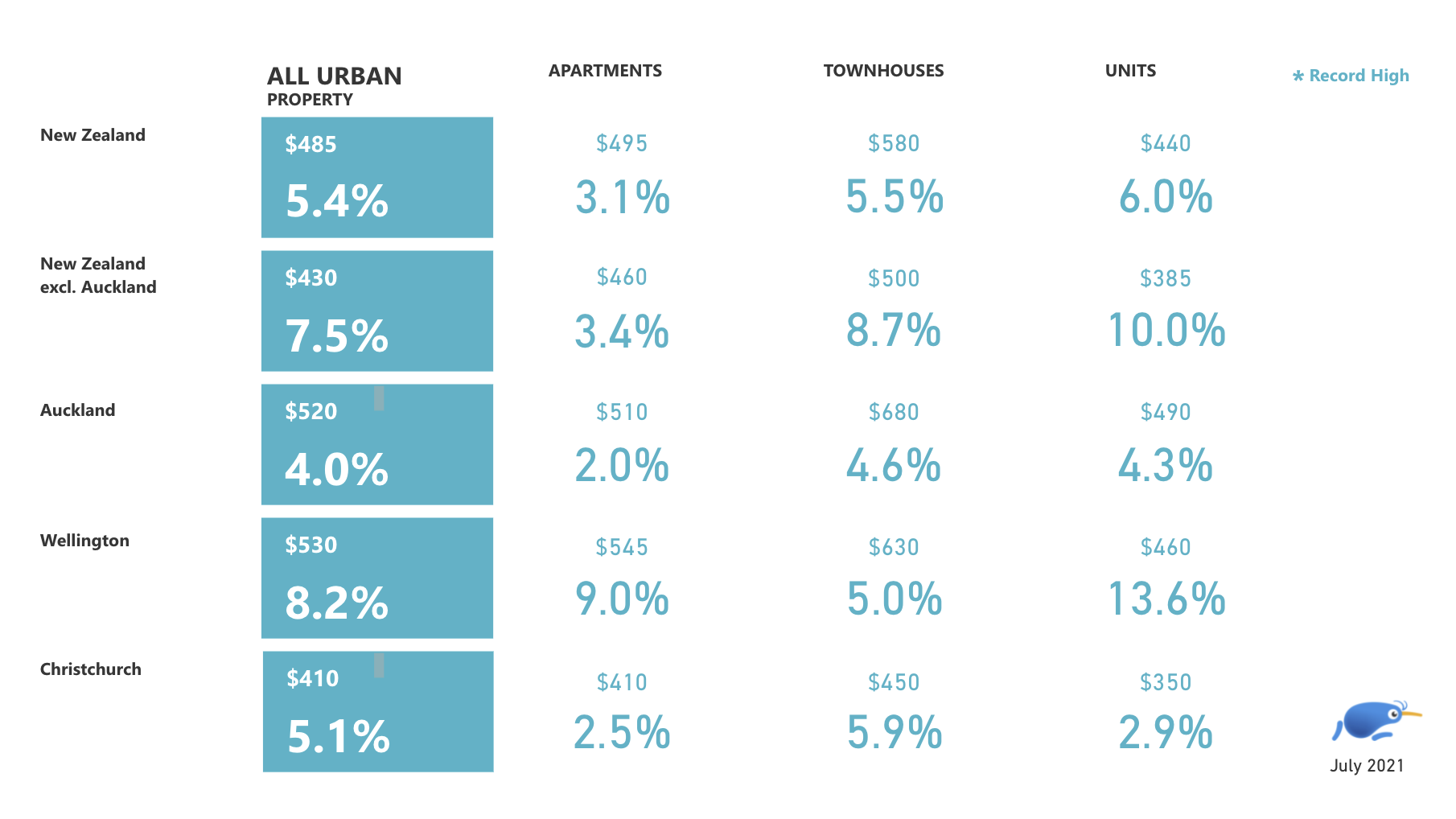News Next article
Rental Price Index - July 2021
New Zealand rents saw their biggest year-on-year increase of all-time in July, jumping by 10%
26 August 202123 Stewart Rd, Mount Albert
New Zealand rents saw their biggest year-on-year increase of all-time in July, jumping by 10 per cent when compared with the same month last year, according to Trade Me’s latest Rental Price Index.
Trade Me Property Sales Director Gavin Lloyd said the national median weekly rent reached a new high of $550 last month, marking its second record-breaking month in a row. “After remaining stagnant for three months from March-May, we saw rents take off again in June with the median weekly rent reaching $545 and then climbing again in July.
“This marks the largest price growth we have seen in the rental market since we started recording rents in 2015.”
Mr Lloyd said records were broken in Taranaki ($500) and Auckland ($595) in July. “The only region that did not see a year-on-year increase last month was Otago, where the median weekly rent dropped by 2 per cent year-on-year.”
When compared with July last year, demand for rentals increased slightly by 1 per cent nationwide. “Canterbury (26%) and Nelson/Tasman (18%) were the regions that saw the largest uplift in demand for rentals in July when compared with the same month last year.”
However, Mr Lloyd said demand was still outweighing supply, with the number of rentals down by 8 per cent nationwide last month when compared with July 2020. “Southland (8%) and Waikato (3%) were the only regions that saw an increase in rental market supply when compared with the same month last year. As long as supply is unable to catch up with demand we wouldn’t expect to see this rate of growth ease off any time soon.”
Mr Lloyd said time will tell what impact the level 4 lockdown has on the rental market. “Last year after the nationwide lockdown, we saw the rental market heat back up quickly. After being stuck at home for Alert Level 4 last year, many tenants decided their rental wasn’t up to scratch and we saw a flurry of activity in the market as soon as we moved down alert levels and things began to get back to normal. We’re expecting a similar thing to happen after this lockdown ends, especially as we enter warmer months that are typically busier anyway.”
Upper Hutt becomes Wellington’s most expensive spot
For the first time ever, Upper Hutt and Lower Hutt overtook Wellington City to become the most expensive districts in the Wellington region last month.
Mr Lloyd said the median weekly rent in Upper Hutt reached an all-time high of $625 last month, climbing 30 per cent on last July to overtake Wellington City by $30 a week. “The median weekly rent in Lower Hutt also reached a new high of $600 last month, increasing by 9 per cent year-on-year.”
| July 2017 | July 2018 | July 2019 | July 2020 | July 2021 | |||||||
|---|---|---|---|---|---|---|---|---|---|---|---|
| Wellington City | Wellington City | $490 | $490 | $520 | $520 | $560 | $560 | $565 | $565 | $595 | $595 |
| Porirua | Porirua | $460 | $460 | $500 | $500 | $525 | $525 | $590 | $590 | $595 | $595 |
| Upper Hutt | Upper Hutt | $385 | $385 | $410 | $410 | $470 | $470 | $480 | $480 | $625 | $625 |
| Lower Hutt | Lower Hutt | $445 | $445 | $450 | $450 | $530 | $530 | $550 | $550 | $600 | $600 |
“We’ve seen Porirua and Wellington City battle it out for the most expensive spot in the region ever since Porirua took out the top spot for the first time in July 2020.
“As we began to see in the Porirua district last year, Wellington tenants are looking outside the city to get more bang for their buck. In Upper Hutt they’re likely to get a bigger place with more space for the same amount they’d pay in Wellington City and many are happy to opt for a longer commute in exchange for cheaper rent.”
Mr Lloyd put the rent increases in the Wellington districts down to market supply shortages in conjunction with months of massive demand. “This is the story right across the Wellington region - it’s a very competitive market right now.”
Looking at the wider Wellington region as a whole, rents increased by 7 per cent in July when compared with the same month in the year prior.
Demand for rentals in the Wellington region in July was down by 2 per cent last month when compared with the same month in 2020, while supply was down by 3 per cent. “After months of pent up demand, we will likely need to see consistent slowing demand to see prices in the region cool off.
“The most popular rental in the region last month was a two-bedroom house on Meadows Avenue in Lower Hutt, for $490 per week. The property received 63 enquiries in its first two days onsite.”
Auckland’s median rent increases for the first time this year
In the Auckland region, the median weekly rent was $595 in July. “This marks the first increase we have seen in the region this year, with the median weekly rent previously sitting at $590 since January.”
Looking at Auckland City alone, the median weekly rent was $570. “The most expensive districts in the region were Waiheke ($720), North Shore City ($635), and Papakura ($620).”
| District | Median Weekly Rent | ||
|---|---|---|---|
| Waiheke | Waiheke | $720 | $720 |
| North Shore City | North Shore City | $635 | $635 |
| Papakura | Papakura | $620 | $620 |
Mr Lloyd said demand in the Auckland region was down by 5 per cent year-on-year. “Supply in the region was also down by 2 per cent when compared with July 2020.
“July’s most popular rental listing in Auckland was a two-bedroom apartment on Dene Court Lane in North Shore CIty, with a weekly rent of $450. It received 87 enquiries in its first two days onsite.”
Houses of all sizes see rents increase
Mr Lloyd said the median weekly rent for all house sizes saw an annual increase in every region last month. “Small (1-2 bedroom) properties saw the largest rent increase in July, with their national median weekly rent up 9 per cent year-on-year."
Units see the biggest rent increase
When compared with July last year, the national median weekly rent for units increased by 6 per cent, to $440. “This is the largest increase seen for rents of all urban properties, closely followed by townhouses which saw a 5.5 per cent year-on-year increase.”
NOTES
- About the Trade Me Property Rental Price Index: This report provides a comprehensive monthly insight into the rental market covering price trends by type and size of property across New Zealand. The index is produced from Trade Me Property data of properties that have been rented in the month by property managers and private landlords. On average over 11,000 properties are rented each month and the report provides a comprehensive insight into this part of the property market for tenants, landlords and investors. The index is calculated using the rounded median rent in the month, this being an accurate statistical assessment of the current rent being charged by landlords and property managers.
- More info: For information about the differences between the Trade Me Property data and bond data collected by Tenancy Services, please read this post by Dr Lucy Telfar-Barnard from the University of Otago:
http://onetwothreehome.org.nz/2015/05/11/how-high-is-the-rent/




